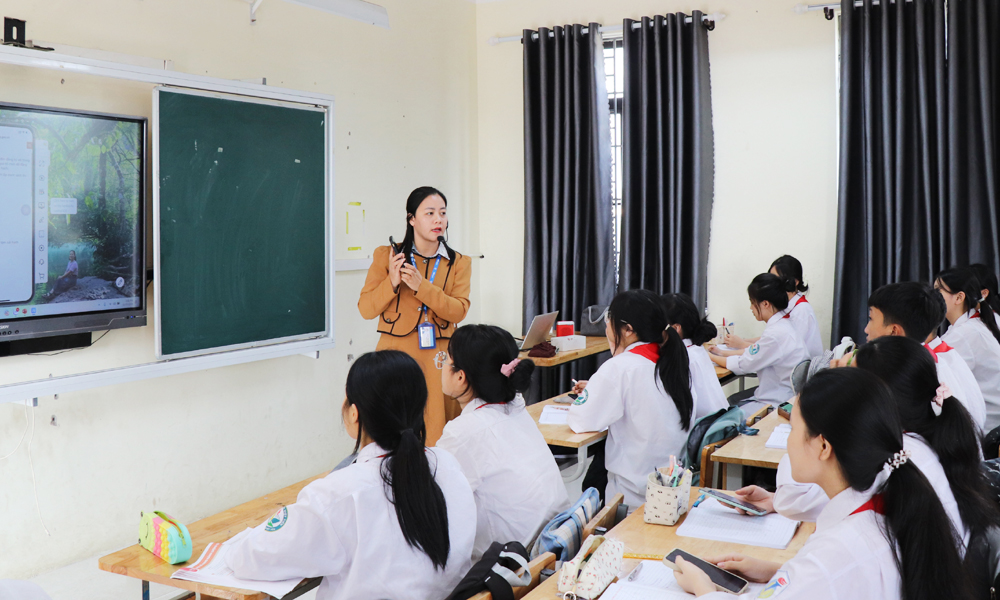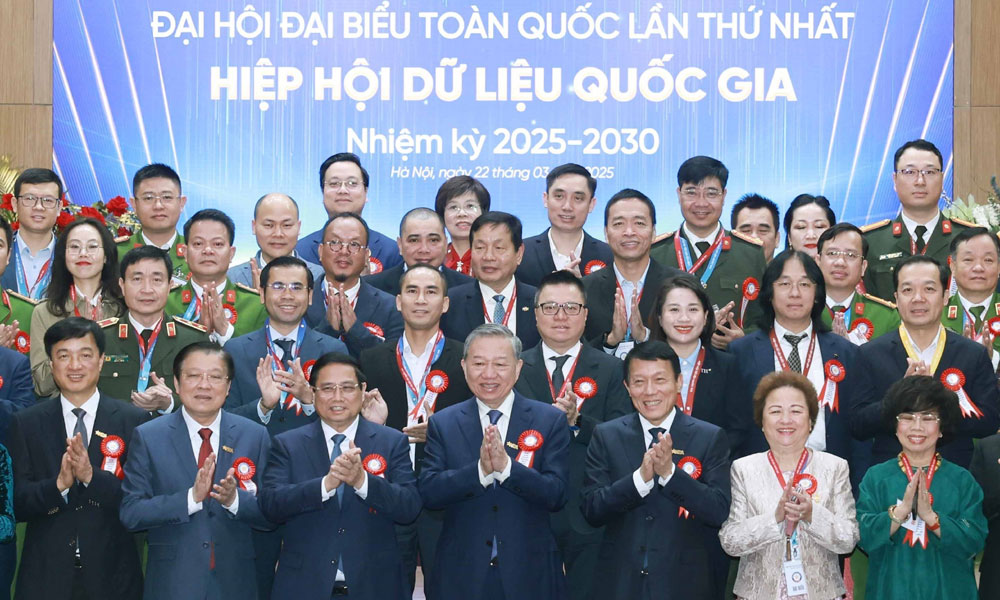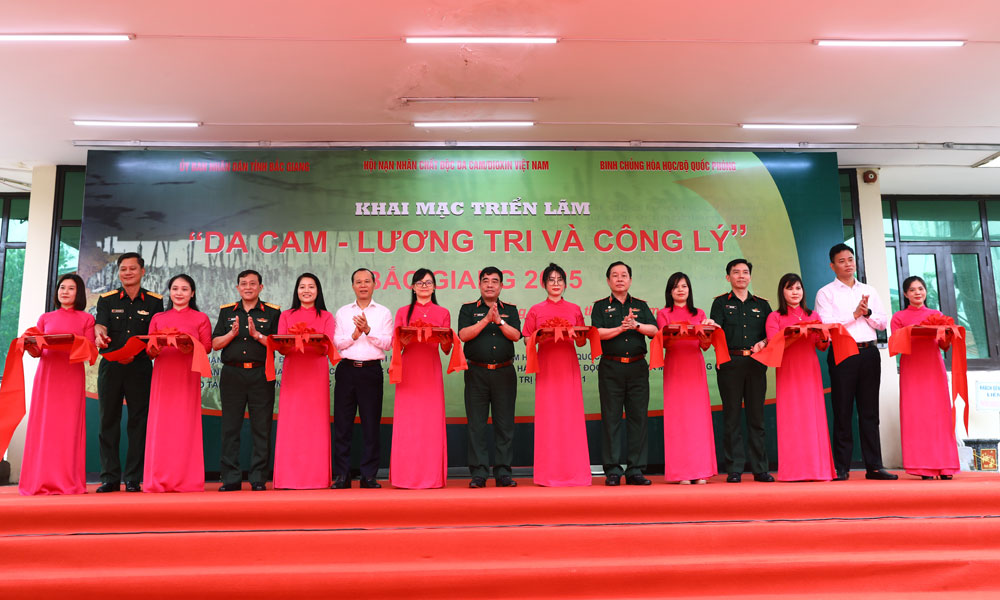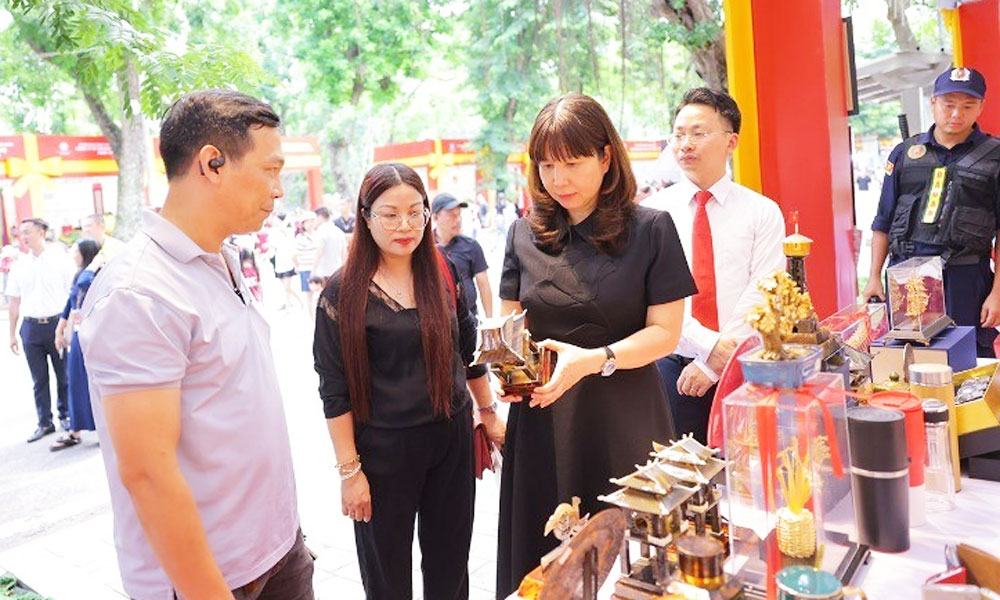Application of 3D technology to promote the value of cultural heritages
The digitisation of documents and the enhanced application of 3D technology have been providing new approaches and diverse utilities in the conservation, research, and promotion of cultural heritage values, contributing to the realisation of the Party’s guidelines on cultural development.
In his article entitled ‘Digital Transformation – An important motivation for developing productive forces, perfecting Production Relations, and leading the country into a new era’, Party General Secretary To Lam emphasised the task to promote the application of information technology, and build a digital platform to connect and share data among agencies and organisations.
 |
|
The Dien Huu Pagoda was reconstructed using virtual reality technology by Sen Heritage Group. |
The goal is to rank in the top 50 leading countries in the world and the third in ASEAN in terms of e-government and digital economy in 2030.
He called on joint effort to successfully carry out the digital transformation revolution, and create breakthroughs in the development of productive forces, and perfection of production relations, propelling our nation and people into the new era of advancement, civilisation, and modernity.
The decisive leadership and specific goals set by the General Secretary have strengthened the determination of those working on digitisation across various fields.
In the cultural sector, digital technology has been applied in the preservation, promotion, and enhancement of Vietnamese cultural heritage values, helping Viet Nam’s culture integrate with other cultures worldwide.
Actions have also been taken to actively implement digital technology in the conservation and promotion of cultural heritage, aiming to create a digital heritage database (E-Heritage) and a big data repository for Viet Nam’s cultural heritage.
The amended Cultural Heritage Law and the Data Law, recently passed at the 8th session of the 15th National Assembly in November 2024) have timely provided a legal framework to facilitate the development of digital transformation in the cultural heritage sector in the future.
The application of 3D imaging technology is especially useful in storing and exhibiting of the heritage as it enhances connectivity and interaction in the use of preserved documents and artifacts, while creating engaging and distinctive experiences.
In conservation and research, 3D imaging technology helps store, reproduce images, and create replicas with the highest accuracy.
Recently, scientists and archaeologists working in the Vuon Chuoi excavation site in Hoai Duc district, Ha Noi applied 3D imaging technology to store images of artifacts in the three-dimensional space of the excavation pit, collecting the most authentic data for further research.
The advancement of technology now allows this work to be done on site—something previously not feasible. As digitisation efforts are accelerated, the application of 3D technology still has much room to develop to better serve the cultural industry.
According to Dinh Viet Phuong, Director of 3DArt Company - the unit currently working on the 3D scanning the excavation pit at Vuong Chuoi and a longtime technology supporter of cultural heritage, the current market shows great interest in products simulating heritage and treasures for diverse needs such as museum exhibitions, decorative arts, religious and spiritual purposes, and souvenirs.
 |
|
Ho Chi Minh City marks 50 years of reunification with 3D mapping show. |
The Viet Nam cultural heritage digitisation program for the 2021–2030 period aims to digitise and apply on digital platforms all special national sites, national treasures, and intangible cultural heritage items listed in the national intangible cultural heritage catalogue.
The Viet Nam National Museum of History was the pioneer in piloting 3D digitisation with many artifacts of various types and materials, applying 3D virtual reality interaction technology in exhibitions to serve visitors and researchers. The museum’s success has inspired many other museums to follow, many have achieved remarkable progress.
The process of digitising and 3D modeling documents and artifacts is expanded and enhanced within the museum and heritage site systems.
However, digitisation and the enhanced application of 3D technology in conserving and promoting the value of cultural heritage still face certain difficulties and challenges.
The more digital technology develops, the greater the investment required in funding and human resources for development and operation. In addition, the use of 3D technology requires cultural heritage professionals to continuously update their skills in digital transformation.
 Bắc giang
Bắc giang













Reader's comments (0)